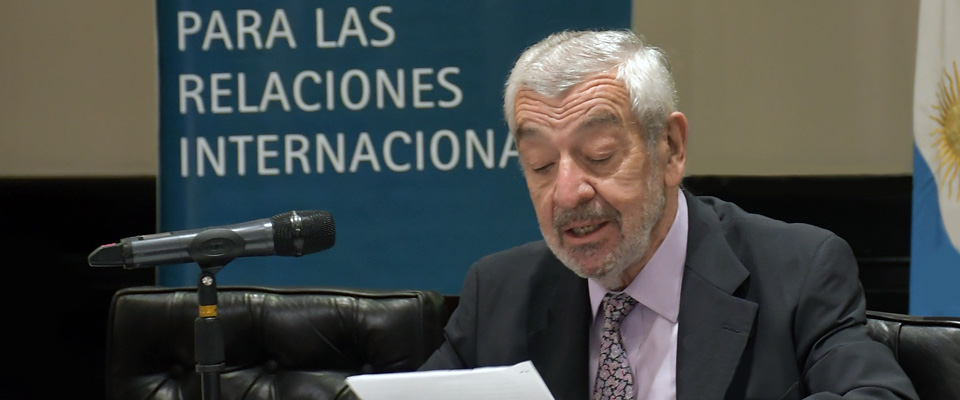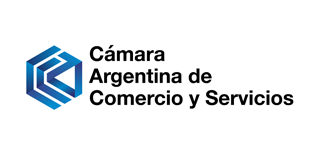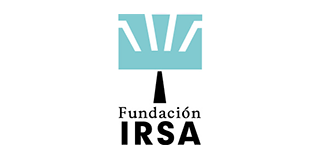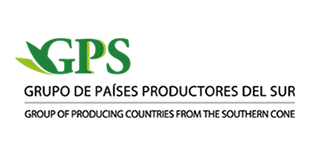Mexico is the United States Border Patrol
Por Dulce María Hernández Márquez, 12 de abril de 2021
It is well known that many people have crossed Mexico's northern border to fulfill their American dream. However, in more recent years, the Mexican State has ceased to be just the way to get there and has become a destination for migrants. Especially during one of the presidential terms with stricter immigration laws, such as former U.S. President Donald Trump. Despite all of that, Mexico is not the best destination. It is necessary to analyze the migratory situation in Mexico from its violent reality as well as from its international commitment, which it has signed in different treaties.
Trump's immigration policy was highly criticized from the Mexican perspective. However, it must be taken into account that Mexico deported more migrants than the United States. Even during the period of the current president Andrés Manuel López Obrador, Mexico has tripled its deportations. A fact that does not agree very much with the official position of the López Obrador government, which during the campaign and his first year as president, he said that he was going to give work visas to Central American migrants. This discourse has changed during his tenure, for which certain situations must be analyzed.
Renegotiation of the NAFTA
One of Donald Trump's campaign promises was to eliminate the North American Free Trade Agreement, which he achieved somehow. Three member countries renegotiated the agreement, now called the USMCA. During these renegotiations, the United States repeatedly threatened Mexico, saying that if the migratory flow that entered the United States from their shared border were not reduced, Mexican products' tariffs would be raised.
Due to the commercial dependence and the Mexican record on deportations, Mexico's decision was more evident. The Mexican country would further control its southern border. However, this was not the only thing that the U.S. government tried to force Mexico to do. Still, it also wanted it to become the Safe Third Country, meaning that the United States would no longer deport migrants to their countries of origin if they are classified as dangerous, but will return them to where they entered: Mexico.
The Mexican government refused to accept being the Third Safe Country, which acknowledged it as a regional problem. However, Mexico had to take a strict role regarding immigration in its own country. Its mission was obvious: to reduce the number of people who cross the Mexico-US border by non-legal means.
The Migrant Caravans
The modality in which migrations have occurred has been changing over time. Before, migrating in an undocumented way to a country was a process that migrants did silently, without attracting much attention. Today, the process has changed, taking caravans, with large groups of people trying to enter a country simultaneously.
The first caravan that entered Mexico did so in October 2018. It left Honduras with 1500 people. Upon reaching Mexico, there were approximately 6000. The Mexican country let them in since they only wanted to pass through the Mexican State to reach the United States, which did not happen. The migrant caravans have continued even with the pandemic. Still, Mexico has already put more strict regarding who could enter the country, detaining said caravans right on the border with Guatemala and deporting the people who manage to enter the country.
Mexico is no longer the only one stopping these caravans. On January 18th, 2021, Guatemala violently stopped a caravan from Honduras, which led not only to international criticism but also to a meeting between Mexico, Guatemala, and the United States. in which it was agreed that the three countries would work blocking the passage of migrant caravans to prevent the worsening of the COVID-19 situation in the area.
Of course, the pandemic is just an excuse for these countries, which are tired of carrying the responsibility of taking care of these migrants. Guatemala has finally joined the border patrol.
The Mexican Dream
For some people who manage to get into the country, Mexico has ceased to be an easy road. It has become the destination of different migrants, either because they have decided so or because they have no other option, but could Mexico be considered the right destination? Is there a Mexican dream?
Economically, there is not. More than 40% of the Mexican population lives in poverty, and with an informal employment rate of 51%, looking for a job in Mexico as an immigrant is not an easy task.
Regarding safety, it seemed almost like a joke that the United States wanted Mexico to be the Safe Third Country to send the deported migrants. Considering Mexico as a safe country, especially for migrants, can be a somewhat bold statement. However, Mexico is safer than some of the Central American Countries. It is still among the most violent countries in the world.
On many occasions, certain criminal groups take advantage of the desperation and vulnerability of migrants and promise to abide them to the United States in exchange for money, a situation that usually ends badly. On January 22nd, 2021, 19 burned and massacred bodies were found in Camargo, a city in Tamaulipas, a border state. It is believed that these were Guatemalan immigrants. Twelve police officers were arrested for their alleged participation in the massacre.
Several similar cases have tainted Tamaulipas, such as the first San Fernando massacre (also known as the Tamaulipas massacre), where 72 Central and South American migrants were killed by the "Los Zetas" criminal group. With the brutality experienced, not only by criminal groups but also by the Mexican police and the army, migrants escape from violence to get into more of it.
Every day there is an even more significant presence of migrants, especially in the northern part of the country, where there are already various settlements of different origins, such as Central America or Haiti. The situation that awakens a broad debate in Mexico about whether migrants are welcome or not, despite the warmth that Mexicans may have, has shown high degrees of racism and xenophobia regarding migrants.
Roadmap for Further Actions
Mexico's migratory situation is such a complex topic, especially considering the migrants that come from the North Triangle of Central America. That is a problem that needs to be analyzed from a legal perspective since it is a tremendous flow of people who are only looking for better living conditions. This is a consequence of violence and natural disasters under which these people live in their places of origin. Plenty of international treaties protect their rights.
First of all, by definition, these migrants must be given refugee status, since according to the UNHCR (United Nations High Commissioner for Refugees), a refugee is a person who leaves their place of origin for fear of being persecuted, conflict, generalized violence, or any other circumstance that seriously disturbs public order and therefore requires international protection. Still, the Mexican authorities, without giving explanations, have refused to recognize them as refugees.
Also, in recent years Mexico has been supporting treaties in which it is positioned in favor of the entry of these migrants. It is even promoting (in conjunction with Switzerland) the Global Compact on Refugees. Among the treaties that Mexico has been signing in recent years is the Declaration of San Pedro Sula (marked in the Comprehensive Regional Framework for Protection and Solutions). The third point of its preamble reaffirms that these Central American migrants should be given refugee status. Thus, it would mean the need to provide them with dignified treatment when crossing the Mexican country.
However, this is not happening. Between 2013 and January 2021, Mexico recognized as refugees only 58,87% (25.176) of the Northern Triangle of Central America applicants. The figures worsen with the knowledge that Mexico is deporting Central Americans before they can speak with COMAR (Mexican Commission for Refugee Assistance) personnel so that they cannot request refuge in the country. To visualize this, in 2018, 5.600 people from the Northern Triangle asked for shelter in Mexico, of which only 1.547 were granted a refugee status, compared to the 98.787 Central Americans who were deported from the country.
It is expected that these migrants will be given refugee status and that the Mexican government will improve and facilitate the processes that must be carried out since a low rate of people is actually getting a refugee status. Even though more migrants met the requirements, many were unable to complete the procedures due to misinformation on the subject. The respective authorities do not give that information to migrants. Indeed, many Central Americans who cross the country do not even know that they have the right to seek asylum and not approach the authorities for fear of being deported.
These are some of the reasons why Mexico is not only going against the Declaration of San Pedro Sula but also by not allowing migrants to have communication with the COMAR. It is disobeying the Brazil Declaration and the San José Action Statement, which mention that there should be an improvement of the migrants' situation, including their processes and migrant care centers.
Mexico has promised to help these migrants, who risk so much when crossing the region, but the Mexican state has not done so much in practice. It has ignored the human rights of these people. It even has ignored the Mexican Constitution itself. In the first article, everyone must enjoy the rights established in the rest of the Constitution. At no time is nationality excluded. Therefore, these migrants have the privilege of asylum, free transit through the country, dignified treatment, not discrimination, but these have not been respected. The human rights of migrants are easily violated in Mexico. From massacres like the Camargo mentioned above and San Fernando one, to kidnappings orchestrated by Mexican police, crossing Mexico is difficult, especially for migrants trying to flee these situations in their own countries.
The Mexican government must respect both its international treaties and its own Constitution and, therefore, not be against helping people who have emigrated from the Central American Northern Triangle seeking to start new lives in the United States or stay in Mexico. The country has signed up and pledged to help them.
Mexico must open its doors to migrants, give them fair treatment and do what is humanly possible to ensure their safety. They are also people, people who leave their lives and belongings behind to seek better living conditions, flee from natural disasters, or the severe conditions of violence that they experience daily. They must be treated as refugees.
Conclusion
Undoubtedly, there is a migratory crisis in Mexico that has not been responded to legally or correctly due to the economic and political interests that the country has with its neighboring United States. This situation may change a bit during the new presidential term since Trump imposed no pressure before.
During that presidential period, the power that the American government has over Mexico became more than evident. It led to the change of López Obrador immigration policy, one of the friendliest policies that the country has had, to one of the strictest in history.
Mexico must work on its international and humanitarian commitment to helping migrants enter the country, ensure the protection of their human rights, and work to improve their care for them to comply with their due migration process. In reality, the situation could change, considering that President Joe Biden declared reforms to the migration policy since his first day in office, making it more friendly. Still, Mexico has not announced any changes in its approach. The American migration policy changes could lead Mexico to stop acting as the United States border patrol or instead continue to operate against the international treaties it has signed since it has realized that the only global consequences are mere criticisms.
Dulce Maria Hernandez Marquez is an Associate Fellow on Latin America Politics of ADASTRA Think Tank. She has obtained a Professional Technical Bachelor in Computer Science at Colegio Nacional de Educación Profesional Técnica (CONALEP) (Mexico) and will obtain Bachelor's Degree in International Studies at Facultad de Estudios Internacionales y Políticas Públicas from Universidad Autónoma de Sinaloa (Mexico) in 2021. Dulce was also studying International Relations at the University of Warsaw (Poland) as a part of an academic exchange. She researches the issues in international and cyber security fields thanks to her background. The subtopics that interest her the most are migration processes and migration policy. She participated in numerous events, organised as by multilateral organisations as by Mexico governmental agencies such as Instituto Nacional del Emprendedor (INADEM) or Secretaría de Economía (SE). Speaks Spanish, English, and French.


























